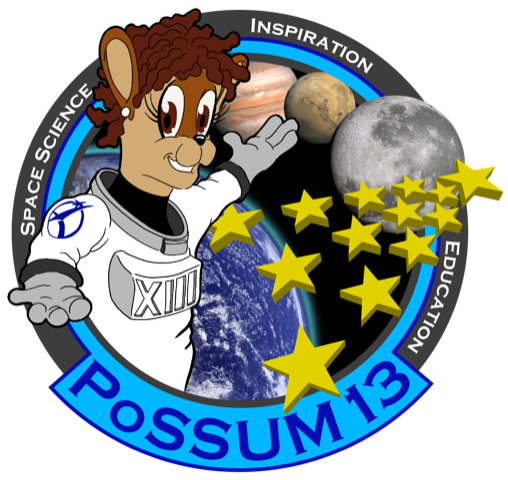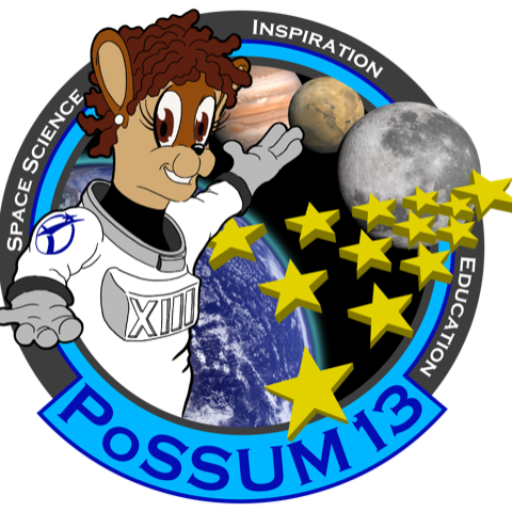1. What is citizen-science?
Citizen-science is considered the scientific research, collection, and analysis of data relating to the natural world by members of the general public (citizens), typically as part of a collaborative project with professional scientists.
2. Can I be a Citizen-Scientist?
Yes, you can participate in projects that contribute to meaningful research that allows us to better understand the world around us. There are a growing number of Citizen-Science associations and organizations that you can join. As well, many Science museums have Citizen-Science events that you can participate in (maybe even in your city)! Many space agencies have Citizen-Science projects and invite the general public to get involved.
3. What is a Scientist?
A scientist is someone who systematically gathers and uses research and evidence, making a hypothesis and testing it, to gain and share understanding and advance knowledge in an area of interest.
4. Who are the Ambassadors?
The 2019 PoSSUM 13 Ambassadors are:
Karen Brun
Alyssa Carson
Bethany Downer
Carmen Felix
Kellie Gerardi
Shayla Givens
Yvette Gonzalez
Heidi Hammerstein
Ulyana Horodyskyj
Shawna Pandya
Norah Patten
Amy Ramos
Yajaira Sierra-Sastre
5. How do I become an Ambassador?
In order to become an Ambassador, you need to complete a Project PoSSUM Scientist-Astronaut Introductory course OR Advanced Academy course and then complete at least one Citizen-Science Campaign. The Project PoSSUM Scientist-Astronaut Introductory course OR Advanced Academy course are offered twice a year. The Citizen-Science Campaigns are offered multiple times a year. For more information please go to the Project PoSSUM website.
Ambassadors are peer selected and commit to a minimum of two years in their role.
6. What is a Scientist-Astronaut Candidate?
A Scientist-Astronaut Candidate is an individual undergoing training with the Project PoSSUM Academy learning how to:
1) perform effective suborbital noctilucent cloud science missions,
2) serve as possum educators, and
3) conduct possum aeronomy, bioastronautics, and human factors research that provide a research foundation for tomorrow’s space missions.
7. What is Project PoSSUM? How can I become a Scientist-Astronaut Candidate?
Project PoSSUM is the first and only crewed suborbital research program.
The Advanced PoSSUM Academy is for undergraduate students interested in astronautics. Qualifies the graduate for all PoSSUM citizen-science opportunities and may be transferable to ‘scientist-astronaut’ status upon earning a BS degree.
The Project PoSSUM Scientist Astronaut program for applicants already holding a BS degree (or equivalent). 12 applicants selected each selection. This qualifies the candidate for all PoSSUM citizen-science, educator, and spaceflight opportunities.
The Applied Astronautics Program is a one-year intensive astronautics program designed for the spaceflight professional. Students select two concentrations of PoSSUM astronautics research.
You can learn more about Project PoSSUM here.
8. Do I need to be a scientist to join Project PoSSUM as a Scientist-Astronaut?
The Project PoSSUM Scientist Astronaut program for applicants already holding a BS degree. 12 applicants selected each selection. This program qualifies the candidate for all PoSSUM citizen-science, educator, and spaceflight opportunities.
9. What is Microgravity?
Microgravity is one of several terms (like zero-gravity, 0-G, weightlessness) used to describe objects in near freefall resulting from the absence of a normal or reactive force. For example, your feet exert a force on the floor, and the floor exerts an equal and opposite normal force on your feet so you don’t fall through the floor. You can experience microgravity by jumping in the air: the moment your feet leave the ground, you are weightless (the floor is no longer exerting a normal force on you) but you will fall toward the ground! This is exactly what astronauts experience when they are floating in the space station; the only difference is that in space, the astronauts and the space station fall together; they can be weightless for months at a time as they fall around (or orbit) the Earth. Scientist are interested in studying how microgravity affects equipment and humans. Parabolic flights provide a means of creating a freefall environment for about 20 seconds for a lot cheaper and quicker than it would take to launch into space! Note that there is gravity in space; gravity holds the Earth and Moon in orbit around the Sun. We use the term “microgravity” to acknowledge that perfect freefall is not really achievable; dust, micrometeorites, vibrations, (or air drag on Earth) exert tiny normal forces.
10. When will the Microgravity Challenge winner be announced?
We intend to announce the Microgravity Challenge winner in June 2019. We will inform everyone as any updates and/or schedule changes occur!
11. Where do I upload my team’s video?
Your video should be uploaded to YouTube (with parent or adult mentor approval) using the privacy mode and it should not be longer than 2 minutes. In the application page there is a section where you will share with us the link.
12. What are my privacy options on Youtube?
If you have concerns about video privacy, we recommend choosing the “Unlisted” privacy option for your video submission. An unlisted video is a different type of private video. “Unlisted” means that only people who know the link to the video can view it (such as friends or family to whom you send the link). An unlisted video will not appear in any of YouTube’s public spaces (such as search results, your channel, or the Browse page) and PoSSUM 13 will not share the link. General YouTube guidelines still apply and parental consent is still required for submitting an unlisted video.
13. Why is there only one winner allowed to fly in October with their experiment?
At this time, PoSSUM 13 has committed to supporting one experiment to fly in October 2019. We encourage you to stay tuned about future opportunities!
14. Can multiple winners be chosen?
Only one winner will be chosen to fly for this PoSSUM 13 competition. We encourage you to stay tuned for possible future opportunities!
15. Who is on the Evaluation Committee?
The evaluation committee includes members of the PoSSUM 13 as well as representatives from Project PoSSUM.
16. Can I submit my proposal in another language?
Applications, including the supporting videos can be in Spanish, English, or French.
17. Which countries are allowed to submit physical payload proposals?
Physical payload submissions will be accepted from North America (Canada, United States, Mexico), Central America (Belize, Costa Rica, El Salvador, Guatemala, Honduras, Nicaragua, Panama), and the Caribbean (Antigua and Barbuda, Bahamas, Barbados, Dominica, Grenada, Haiti, Jamaica, Dominican Republic, Saint Kitts and Nevis, Saint Vincent and the Grenadines, Saint Lucia and Trinidad and Tobago). Cuba is excluded from this list.
18. How can I contact an Ambassador?
On our PoSSUM 13 ambassadors page you can review the biographies of the PoSSUM 13 Ambassadors, which also includes links to their respective social media channels and email addresses.
19. Can an Ambassador be my mentor? How do I do this?
Please contact us at to discuss what type of mentorship you would like to receive. We can then get you in touch with one of the PoSSUM 13 Ambassadors who can offer the best support to you! [email protected]
20. Can I meet the PoSSUM 13 Ambassadors? Can a PoSSUM 13 Ambassador speak at my school?
Our PoSSUM 13 Ambassadors live and work worldwide. We encourage you to communicate directly with these ambassadors, or to email us indicating your region to facilitate possible engagement opportunities.
21. Will the winner wear a space suit on the microgravity flight?
While there will be plenty of opportunities to learn about and interact with a space suit, the winner will not be wearing a space suit during the flight campaign.
22. What kind of research do the PoSSUM 13 Ambassadors conduct?
Project PoSSUM aims to conduct aeronomy, bioastronautics and human factors research that provide a research foundation for tomorrow’s space missions. They are also all respectively working on their own exciting projects in their own careers. Learn more about the backgrounds of our Ambassadors here.

